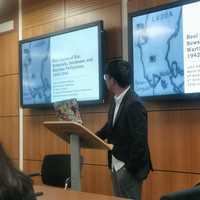
Nick Redfern
Read my new interactive book Computational Film Analysis with R at https://cfa-with-r.netlify.app/.
I have taught film at Manchester Metropolitan University, the University of Central Lancashire, and Leeds Trinity University, where I was programme leader for film from 2016 to 2020.
I graduated from the University of Kent in 1998 with a degree in Film Studies and History, and was awarded an MA by the same institution in 2002. I received my PhD from Manchester Metropolitan University in 2006 for a thesis titled ‘Regionalism and the Cinema in the United Kingdom, 1992 to 2002.’
I have taught film at Manchester Metropolitan University, the University of Central Lancashire, and Leeds Trinity University, where I was programme leader for film from 2016 to 2020.
I graduated from the University of Kent in 1998 with a degree in Film Studies and History, and was awarded an MA by the same institution in 2002. I received my PhD from Manchester Metropolitan University in 2006 for a thesis titled ‘Regionalism and the Cinema in the United Kingdom, 1992 to 2002.’
less
Related Authors
Oliver Gruner
University of Portsmouth
Mike Rancourt
Southwestern College, Chula Vista, Calif.
John Adrianfer Atienza
University of the Philippines Diliman
Holger Pötzsch
University of Tromsø
Stefan Hall
Defiance College
Lucy Panthaky
University of Kent
InterestsView All (22)










Uploads
Books by Nick Redfern
Papers by Nick Redfern
This article analyses the smoothed movie barcodes of 173 trailers nominated for a Golden Trailer award between 2016 and 2019 across nine genres: action, animation/family, comedy, documentary, drama, fantasy/adventure, horror, romance, and thriller. The results show that colours in the nine genres are similar, dominated by dark, unsaturated colours in the orange (hue = 30° ± 30°) and azure (hue = 210° ± 30°) regions of the HSL colour wheel. Colour palettes for each genre have similar colours but show some differences in the diversity and evenness of the distributions of these colours.
This article analyses the smoothed movie barcodes of 173 trailers nominated for a Golden Trailer award between 2016 and 2019 across nine genres: action, animation/family, comedy, documentary, drama, fantasy/adventure, horror, romance, and thriller. The results show that colours in the nine genres are similar, dominated by dark, unsaturated colours in the orange (hue = 30° ± 30°) and azure (hue = 210° ± 30°) regions of the HSL colour wheel. Colour palettes for each genre have similar colours but show some differences in the diversity and evenness of the distributions of these colours.
Audio segmentation comprises a set of techniques for analysing the features of audio signals, including motion picture soundtracks. Parsing the structure of film audio allows us to identify scenes and change points, features in the audio envelope (attack, decay, sustain, release), the distribution of sound energy, and the presence of affective events in a soundtrack. Despite the availability of a wide range of software capable of audio analysis (e.g. Python, R, Sonic Visualiser, Audacity, Speech Filing System, Raven Lite, etc.) statistical analyses of cinematic style have yet to apply these methods to the formal analysis of film soundtracks systematically. In this paper I demonstrate the analysis of film sound using the time contour plot of generated by the R package seewave. The time contour plot is a graphical method for visualising the temporal structure of sound energy based on the short-time Fourier transform of a signal and allows analysts to identify interesting features in a film’s soundtrack that warrant further examination and to communicate is a straightforward manner that is easy to comprehend. Applying this method to the soundtrack of Behold the Noose (Jamie Brooks, 2014), a short horror film, I show that the sound energy in the film increases non-linearly in creating of a state of heightened anxiety in the viewer.